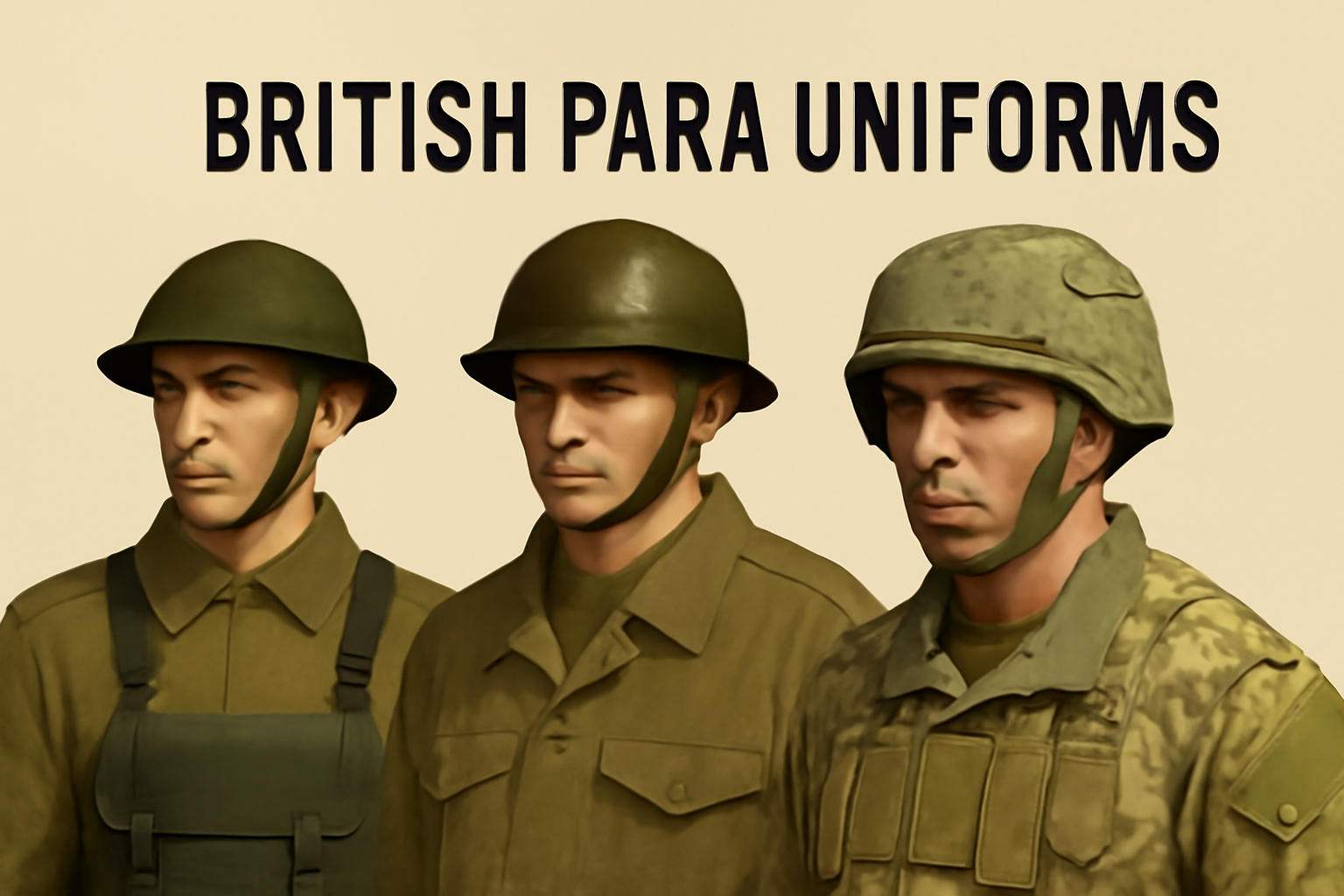
British Para Uniforms: History, Helmets, and Modern British MTP Gear
Published on May 31, 2025
British Para Uniforms: A Detailed Look at British Airborne History and Helmets
The British para uniforms represent a fascinating chapter in military history, reflecting the bravery and innovation of British airborne forces, especially during World War II. From the inception of the British airborne units to the distinctive helmets and modern camouflage gear, these uniforms tell stories of resilience, tactical prowess, and evolution.
The Legacy of the British Airborne Forces
British airborne units first gained prominence during WWII, particularly through their daring parachute assaults. The formation of the British Airborne Division was a strategic response to the evolving nature of warfare, aiming to deploy soldiers swiftly behind enemy lines. The British airborne were trained rigorously and equipped with specialized uniforms and gear designed to withstand the challenges of parachute drops and combat in hostile territories.
The uniforms were functional yet symbolic, with every piece designed to support mobility and protection. This includes the renowned British WW2 parachute uniforms, which set the standard for airborne troops worldwide.
Iconic Helmets: Kelly Helmet, MKIII Turtle Helmet, and M1917A1 Helmet
One of the most visually striking aspects of British para uniforms is the helmet. Each type carries unique historical significance and design features tailored to the needs of airborne soldiers.
Kelly Helmet
The Kelly helmet is a classic piece of British military history, often associated with airborne troops. Known for its distinctive shape and sturdy construction, the Kelly helmet provided vital protection during parachute jumps and combat. Its design allowed for better head coverage without compromising the soldier’s field of vision or comfort.
MKIII Turtle Helmet
Another critical helmet used by British airborne forces is the MKIII Turtle helmet, named for its rounded, turtle-like shell design. This helmet became a standard issue for British soldiers in the latter part of WWII and was favoured for its enhanced ballistic protection. The MKIII’s robust construction made it ideal for airborne operations where soldiers faced threats from all angles.
M1917A1 Helmet
Though originally an American design, the M1917A1 helmet found its way into British service through Lend-Lease agreements during WWII. Some British airborne troops used the M1917A1 helmet in specific operations, appreciating its simple yet effective design. Its historical significance lies in the cross-national cooperation between the Allies.
British MTP Uniform: The Modern Evolution
While WWII parachute gear is iconic, the British military uniform has continued to evolve. Today, the British MTP (Multi-Terrain Pattern) uniform is a standard issue for British airborne forces and other military units. The MTP camouflage was designed to be versatile across various environments, from woodland to desert, ensuring soldiers remain concealed in diverse terrains.
Modern British MTP gear combines advanced fabric technology with ergonomic designs, providing better breathability, durability, and load-bearing capabilities. This evolution marks a shift from the more basic, heavy uniforms of the past to lightweight, multi-functional combat gear.
The Role of British Para Uniforms in Collecting and Reenactments
Military collectors and reenactors highly sought after British para uniforms. Authentic Kelly helmets, MKIII turtle helmets, and vintage airborne uniforms offer a tangible connection to history. For reenactors, wearing accurate British para gear enhances the realism of their portrayals of airborne operations, especially those from WWII.
Collectors appreciate these uniforms for their craftsmanship and historical importance, often preserving and restoring them to keep the stories of the British airborne forces alive.
Why British Para Uniforms Matter Today
British para uniforms are more than just clothing — they are symbols of heroism, innovation, and the enduring spirit of airborne soldiers. Whether it’s the historic WWII parachute outfits or the cutting-edge British MTP uniform, these garments embody decades of military evolution and tactical expertise.
Understanding the history behind these uniforms deepens our appreciation for the sacrifices made by airborne troops and helps preserve the legacy of British military excellence.
Conclusion
British para uniforms offer a rich tapestry of history, design, and function. From the legendary Kelly and MKIII helmets to the versatile modern British MTP uniforms, these garments reflect the bravery and adaptability of British airborne forces. Whether you’re passionate about military history, a collector, or someone interested in tactical gear, British para uniforms stand as a testament to the courage and innovation that define the British airborne legacy.
